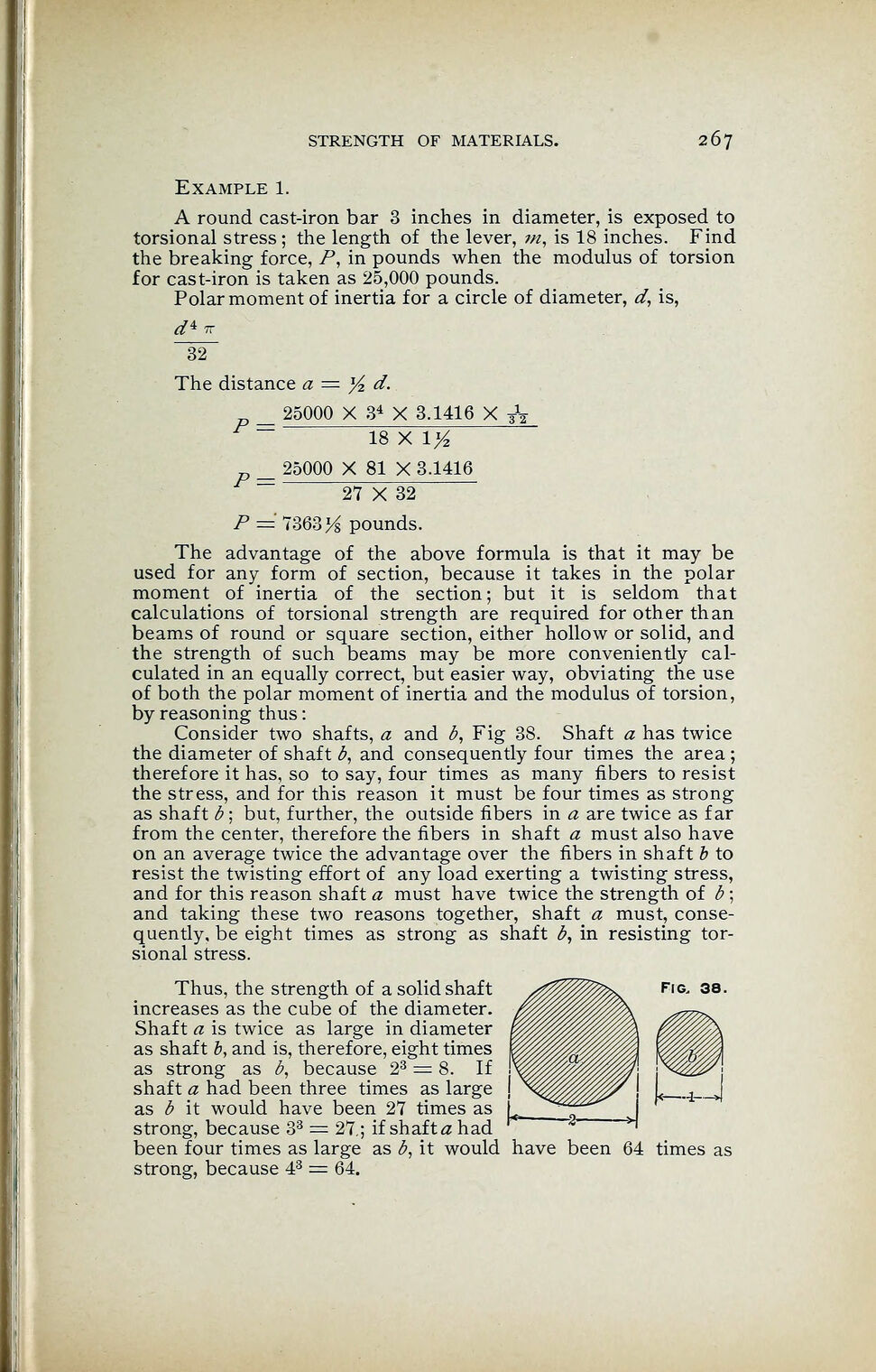
Full resolution (JPEG) - On this page / på denna sida - Strength of Materials - Torsional strength

<< prev. page << föreg. sida << >> nästa sida >> next page >>
Below is the raw OCR text
from the above scanned image.
Do you see an error? Proofread the page now!
Här nedan syns maskintolkade texten från faksimilbilden ovan.
Ser du något fel? Korrekturläs sidan nu!
This page has never been proofread. / Denna sida har aldrig korrekturlästs.
STRENGTH OF MATERIALS. 267
Example 1.
A round cast-iron bar 3 inches in diameter, is exposed to
torsional stress; the length of the lever, m, is 18 inches. Find
the breaking force, P, in pounds when the modulus of torsion
for cast-iron is taken as 25,000 pounds.
Polar moment of inertia for a circle of diameter, d, is,
32
The distance a = y
z d.
_ 25000 X 3* X 3.1416 X A
is x \y
2
25000 X 81 X 3.1416
P = 27 X 32
P = 7363 yi pounds.
The advantage of the above formula is that it may be
used for any form of section, because it takes in the polar
moment of inertia of the section; but it is seldom that
calculations of torsional strength are required for other than
beams of round or square section, either hollow or solid, and
the strength of such beams may be more conveniently cal-
culated in an equally correct, but easier way, obviating the use
of both the polar moment of inertia and the modulus of torsion,
by reasoning thus
:
Consider two shafts, a and b, Fig 38. Shaft a has twice
the diameter of shaft b, and consequently four times the area ;
therefore it has, so to say, four times as many fibers to resist
the stress, and for this reason it must be four times as strong
as shaft b ;
but, further, the outside fibers in a are twice as far
from the center, therefore the fibers in shaft a must also have
on an average twice the advantage over the fibers m shaft b to
resist the twisting effort of any load exerting a twisting stress,
and for this reason shaft a must have twice the strength of b\
and taking these two reasons together, shaft a must, conse-
quently, be eight times as strong as shaft b, in resisting tor-
sional stress.
Thus, the strength of a solid shaft /%%%ffi%^ Fig. 38.
increases as the cube of the diameter.
Shaft a is twice as large in diameter
as shaft b, and is, therefore, eight times
as strong as b, because 23 = 8. If
shaft a had been three times as large
as b it would have been 27 times as
strong, because 33 = 27.; if shafts had
been four times as large as b, it would have been 64 times as
stronsr, because 43 = 64.
<< prev. page << föreg. sida << >> nästa sida >> next page >>